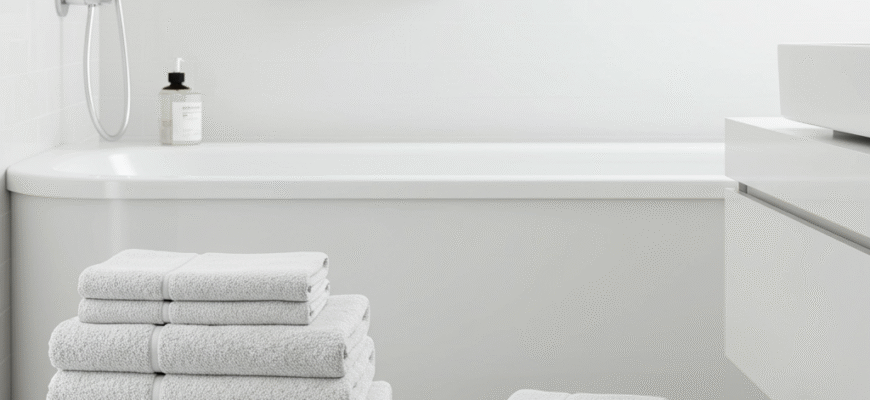Content
The Hygiene Angle: Friend or Foe?
Is this transfer actually dangerous? For most healthy individuals, probably not dramatically so. Our skin has natural defense mechanisms. However, for those prone to acne, breakouts, or specific skin infections, it’s a different story. Bacteria like Staphylococcus aureus can live harmlessly on the skin but can cause infections if they enter through small cuts (like shaving nicks) or pores. Certain fungi responsible for conditions like ringworm or athlete’s foot could theoretically be transferred, although towels are not the most common transmission route compared to direct contact or contaminated surfaces. The argument for separate towels emphasizes minimizing this risk. By dedicating a towel solely for your face, you ensure it only comes into contact with your freshly cleaned facial skin. This reduces the load of bacteria being introduced from other body parts. Consider also that towels, especially when damp, are excellent breeding grounds for bacteria. Using the same towel repeatedly, particularly in a humid bathroom environment, allows microbes collected from all over your body to multiply. Rubbing this potentially bacteria-laden fabric on your delicate facial skin might contribute to clogged pores or irritation.Beyond Bacteria: Skincare Considerations
Hygiene isn’t the only factor. Skincare enthusiasts often advocate for separate face towels for several other reasons. Firstly, products used on the body might leave residue on the towel. Body washes, lotions, hair products (conditioner runoff during showering), or even residual laundry detergent can cling to towel fibers. When you then use that towel on your face, these residues can be transferred. For individuals with sensitive skin, rosacea, eczema, or acne, this transfer can trigger irritation, redness, or breakouts. Facial skin is generally thinner and more reactive than the skin on, say, your back or legs. Secondly, there’s the physical aspect of the towel itself. Body towels are often larger, thicker, and have a rougher texture designed for maximum absorbency and a vigorous drying experience. While this might feel satisfying on your arms and legs, that same texture can be too abrasive for the face. Rubbing aggressively with a coarse towel can cause micro-tears in the skin, disrupt the skin barrier, and lead to irritation or inflammation over time. Dedicated face towels are often made from softer materials like microfiber, bamboo, or high-quality cotton with a gentler weave, designed specifically for delicate facial skin. Some people even prefer to simply pat their face dry rather than rubbing, regardless of the towel type.Important Note: Sharing towels, even face towels, is generally discouraged, especially outside your immediate household. Damp towels can easily harbor and transfer bacteria and fungi. Using a contaminated towel, whether on your face or body, increases the risk of skin infections or irritation, particularly if you have sensitive skin or open wounds.
The Case for Simplicity (Using One Towel)
Of course, there’s a counter-argument rooted in practicality and historical habit. Millions of people use a single towel daily without any noticeable ill effects. If you aren’t experiencing acne, infections, or skin irritation, the risk associated with using one towel might be negligible for you. The key often lies in proper towel hygiene overall. If you choose to stick with one towel, certain practices can minimize potential issues:- Wash towels frequently: Don’t let towels sit damp for days. Wash them in hot water with detergent after every few uses (ideally 2-3 uses, or even daily if you’re prone to skin issues).
- Dry towels completely: Ensure towels air dry thoroughly between uses. Hanging them spread out, rather than bunched up on a hook, facilitates drying and inhibits microbial growth. A heated towel rail is even better.
- Consider drying order: Some suggest drying your face first after showering, before moving on to the rest of your body, theoretically using the “cleanest” part of the towel on the most sensitive area.
- Gentle drying technique: Pat your face dry instead of rubbing vigorously, regardless of using a shared or dedicated towel.
What About Different Towel Materials?
The material and construction of your towel also play a role. Traditional terry cloth towels are absorbent but can be rough. Microfiber towels are known for being very soft and absorbent, drying quickly, which can be beneficial for facial skin and reducing bacterial growth. Bamboo towels are also popular for their softness and potential antimicrobial properties. If you are using one towel, opting for a softer material might be a good compromise. If you switch to two, you can choose a super-soft, gentle fabric for your face and keep the robust terry cloth for your body.Making the Choice: Face Towel vs. Body Towel
Ultimately, the decision of whether to use separate towels for your face and body is a personal one. There isn’t a universally mandated rule. However, understanding the potential benefits, particularly concerning hygiene and skin sensitivity, can help you make an informed choice. Reasons to consider separate towels:- You have sensitive, acne-prone, or reactive skin.
- You are concerned about transferring bacteria from your body to your face.
- You use specific body lotions or hair products whose residue you don’t want on your face.
- You prefer a softer, gentler material for drying your face.
- You want to minimize any potential risk, however small.
- You have robust skin and rarely experience breakouts or irritation.
- You practice excellent towel hygiene (frequent washing, thorough drying).
- You prefer minimalism and less laundry.
- You dry your face first or use a specific section of the towel.
Verified Practice: Many dermatologists and estheticians recommend using a separate, clean towel for the face. This minimizes the transfer of bacteria, oils, and product residues from the body. Regularly washing face towels, ideally after each use or daily, is also advised for those particularly concerned with facial skin health and hygiene.









